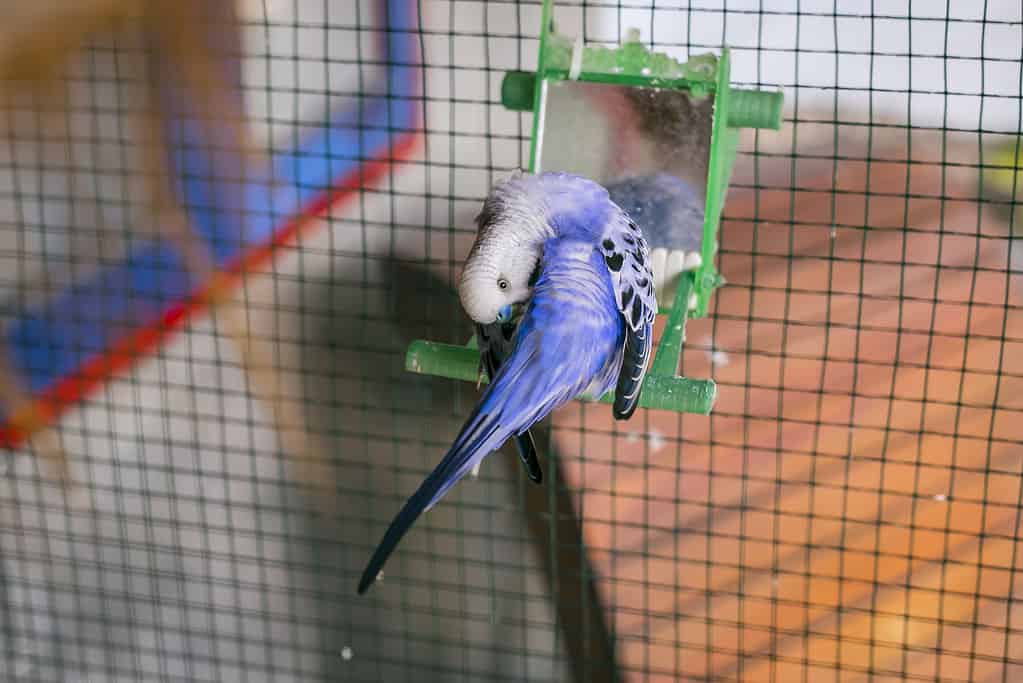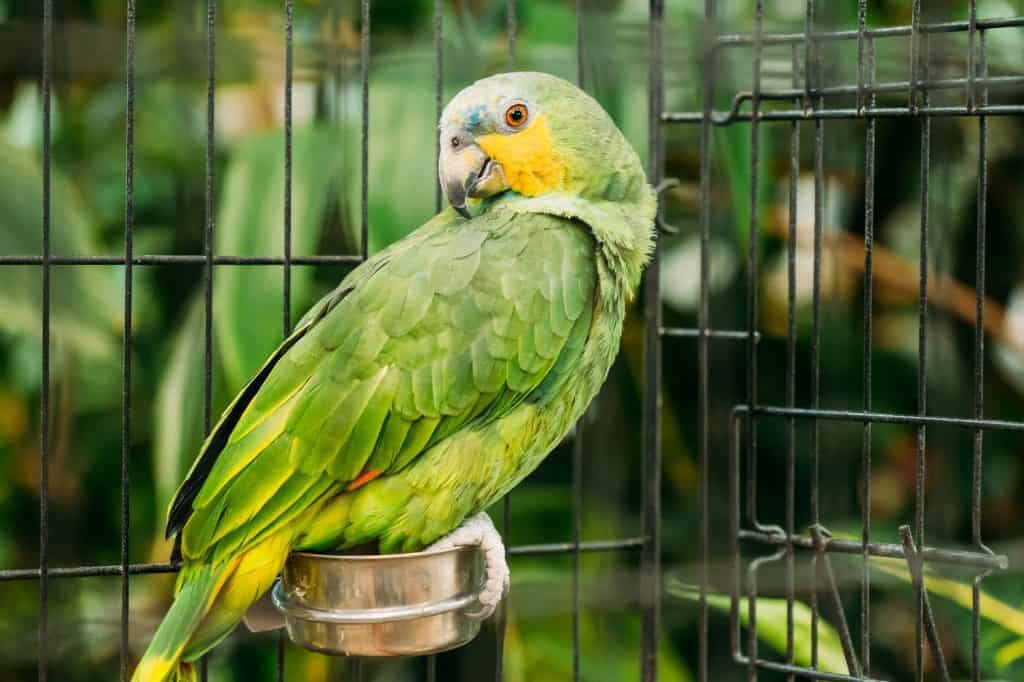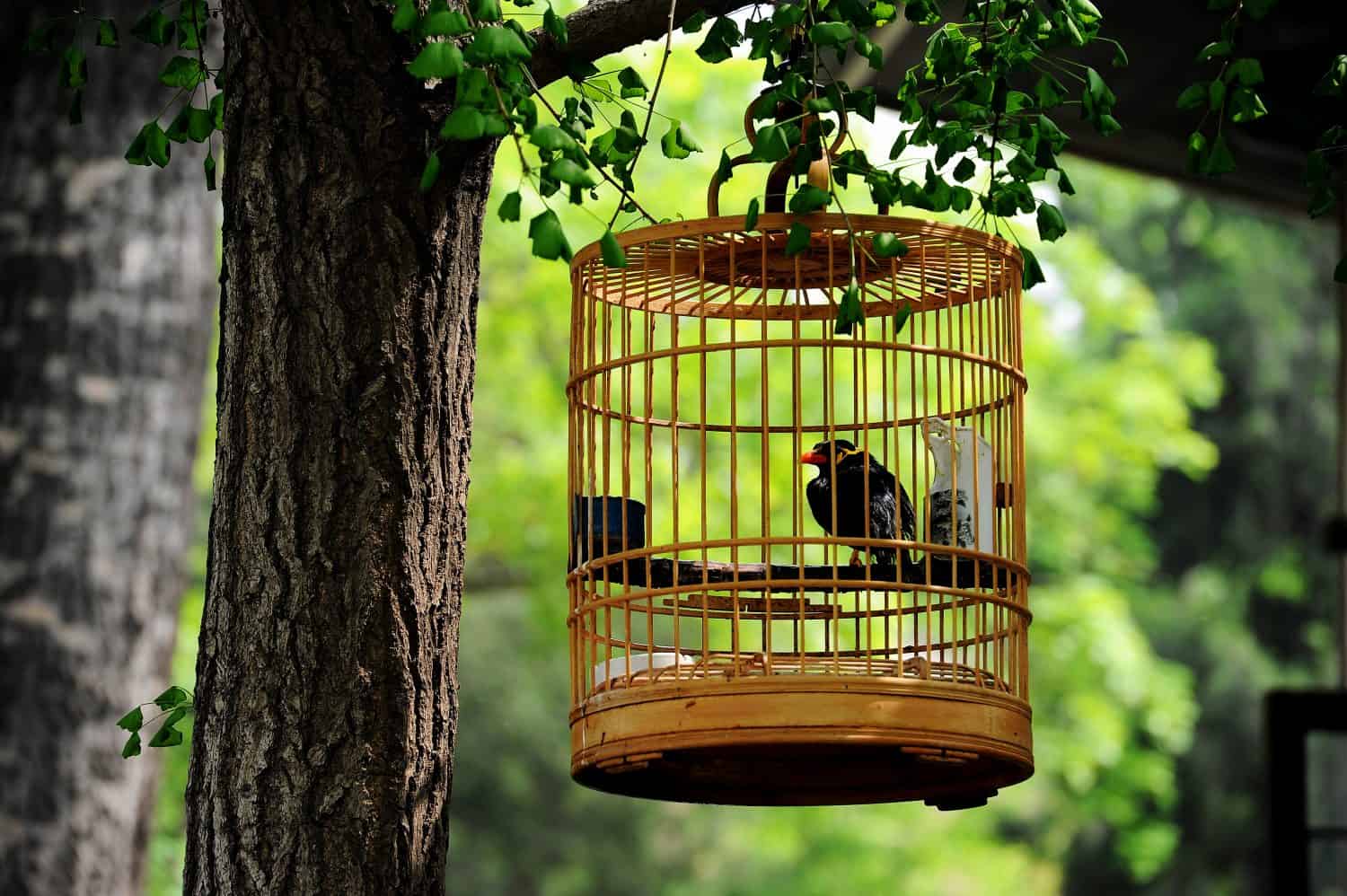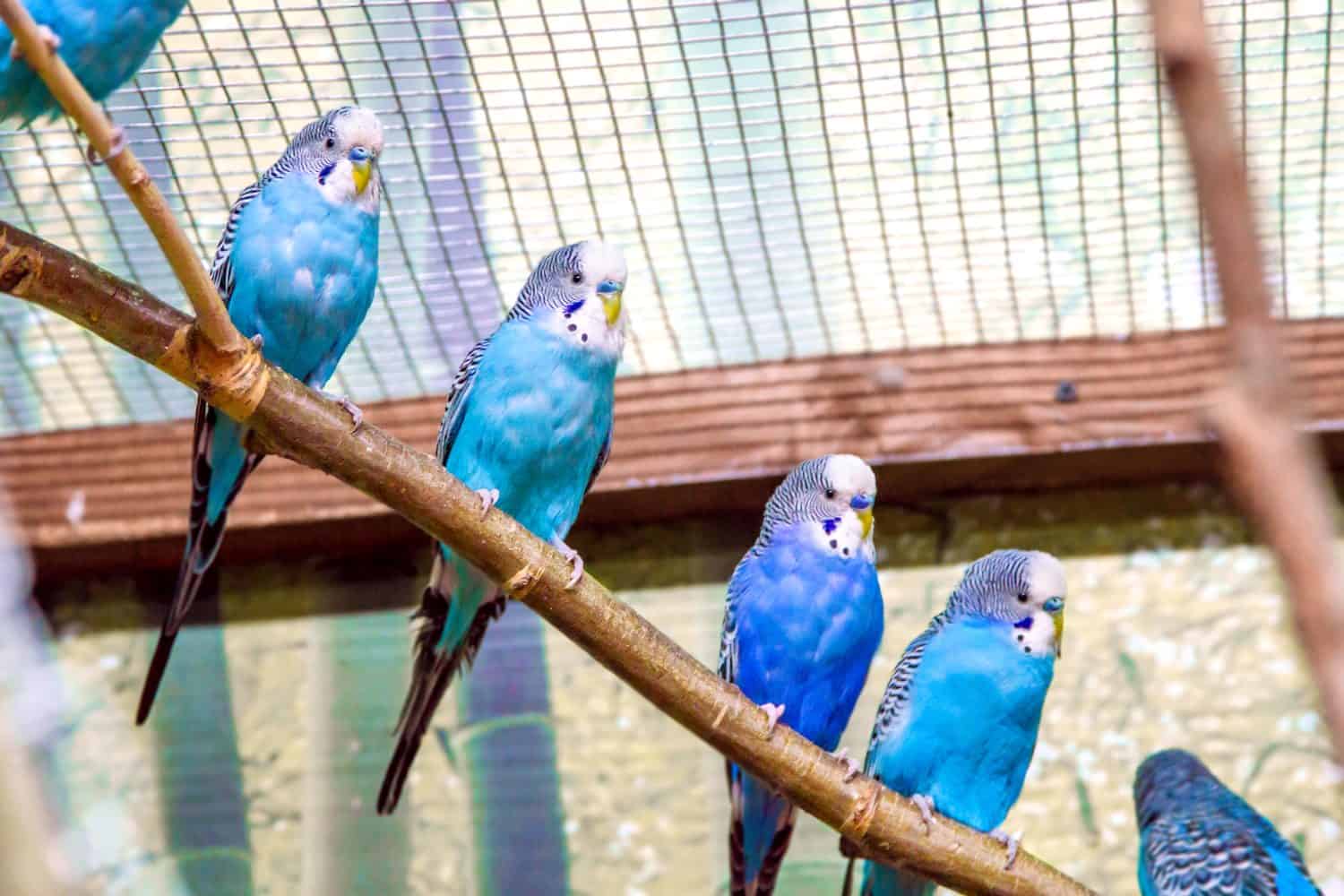If you want to create an inviting bird enclosure on a budget, a homemade birdcage is a good option. You can customize the look, shape, and space for your home and bird’s needs. Whether you have extensive DIY experience or are just starting out, one of these projects will be right up your alley.
It is important to note that your bird’s safety should be the biggest consideration when you plan out your birdcage design and materials. Avoid sharp edges and toxic materials that might pose a threat to your feathered friend. This might mean that you need to enlist the help of a friend with more DIY experience. You can also look for a birdcage kit that comes with all of the bird-safe pieces that you need to build it but still offers some degree of customization.
When selecting your materials and putting in the work, remember that birds like to chew. This is one reason why so many ready-made birdcages are made of metal. It is harder for birds to be destructive with this tougher material. If you are making your own birdcage, consider what materials you want to use. You should also be ready to do some repairs over time as your bird explores and breaks in their new home. Here are some amazing homemade birdcage ideas.
1. Wood Frame Bird Cage

Wood makes an attractive frame for a large birdcage but some birds are likely to chew on it.
©galihmyusuf/Shutterstock.com
One of the top materials used to frame a DIY birdcage is wood. It is easy to work with and attractive, giving a rustic look that many bird owners like. You can paint or stain the wood (talk to your vet about toxic ingredients to avoid first) to help it blend into your home decor. Lumber is also easy to find in a variety of sizes. You can go big without spending a ton of money. You might even be able to find reclaimed lumber for an even more unique piece. It’s best to draw out your plans first and take all of the necessary measurements for your space. The pros of making a wood frame bird cage come down to how easy it is to work with wood and how easy it is to customize the design.
The cons of framing your birdcage with wood is how chewable the material is. Many bird toys are made of wood for exactly this reason. If you have a bird who loves to chew, they are sure to go for the frame if they can reach it. Even birds that don’t chew a lot will perch or peck at it. This can be an annoyance if they do damage and a major problem if the material is not safe for birds. Even non-toxic stains and paints might not be safe for birds who chew on it all day. It’s best to talk to your vet about ingredients to steer clear of. You can also frame the cage so that the birds can’t reach the wood. Covering it in metal or mesh might help, although birds can be surprisingly resourceful when they see something that they want.
2. Mesh Wire Enclosure

You can use the same type of metal mesh found in commercial birdcages to make your own custom enclosure.
©tarfullhd/iStock via Getty Images
Some of the best homemade birdcage ideas involve using wire mesh to create the large sides and top of your DYI cage. It is durable and comes in sheets that are easy to measure and use. Look for wire mesh that is bird-safe. Powder-coated steel and stainless steel are the most durable. Many commercially available birdcages are made of these materials, especially larger cages for birds like parrots that like to chew and explore. It’s a good option to use even for the frame if you have a bird that loves to chew.
The downside of these more durable supplies is that they are expensive. Galvanized steel can be less expensive. it is a good option for an outdoor cage because it won’t rust or get damaged by the elements. Metal can also be more difficult to work with and requires special tools for cutting, soldering, and shaping. It’s important to file down any exposed edges or sharp pieces to avoid injury. You might need to get help or a tutorial from someone with more experience if you are new to DIY. The last thing that you want is for your bird (or you) to get injured during the process.
3. Birdcage Kit

Even standard birdcages can be customized with DIY toys, perches, and other enrichment items.
©Grisha Bruev/Shutterstock.com
If you want to build or customize a birdcage but don’t have a lot of experience or time to design it, a DIY kit is a good option. You can use a starter kit and add or remove sections to make it the perfect home for your little pet. You can also customize the inside of a standard cage to your pet’s liking with toys and accessories. Make DIY chew toys out of old newspapers by folding them accordion style and hanging them from a bird-safe rope, tie slices of dried apples to the side of the cage, or create a toilet paper tube ladder for your bird to climb. You can enjoy the fun of making something for your birdie without worrying about their safety.
4. Upcyle a Vintage Birdcage

Not all vintage birdcages are safe to house birds but if you find one large enough, you can refurbish it for a unique piece that your bird will love.
©1828858957/Shutterstock.com
There’s no denying that there are some amazing vintage birdcages out there. If you’re lucky enough to stumble upon one, even if it needs some TLC, it can make the perfect home for your pet bird. Start by giving it a thorough cleaning with hot soapy water. You might need to use a mineral oil or something similar to remove any sticky residue. It’s important to look at the ingredients in your cleaning products. Only use those that are safe for pets since your bird will be using this home in the future.
If the birdcage is painted, consider using a lead test kit to make sure that the paint will not be toxic to your bird. Regulations may have changed since the cage was made or painted and you will want to be sure that it is safe for your pet. If there is lead paint, you can apply a special sealant over the entire surface to keep it from flaking or causing a problem. You might still need to get it powder-coated for the safest and best-looking results. Fortunately, you can often find a professional to do this task for you rather than get any specialized materials yourself. They can also make sure that any rough edges are filed down and that the birdcage is brought back to its past glory.
Another consideration when looking at vintage birdcages is size. Birdcages today are made for specific types of birds based on their space requirements. It is much easier to decipher which birdcage is right for your pet. Vintage birdcages rarely fit in with the standard sizes of today, which is part of their appeal. But it can also be more difficult to know if the cage is big enough for your bird. Talk to your vet or other bird owners to find out how much space your particular bird needs.
5. Large Aviary

An aviary can house multiple birds at one time.
©Artex67/Shutterstock.com
The last (and largest) of our spectacular DIY birdcage options is the aviary. This type of enclosure is typically outside and houses larger birds or a variety of birds. You can get a kit or design and construct the aviary yourself. If you need an aviary, it’s important to include protection from the elements in your design. After all, your birds will be outdoors in all kinds of weather. This can be a roost or home inside the aviary or a roof over the entire structure.
When coming up with your homemade birdcage ideas, materials are very important. Galvanized steel is a good option because it can hold up to the elements and is very strong and durable. Powder-coated steel is another popular material that is safe for birds. You can use wood for the frame but it should be pressure-treated to prevent rot, decay, or other damage. If you use pressure-treated wood, make sure that the birds cannot reach it. Add another layer of metal mesh between their space and the frame. Cedar and some types of pine are also good choices that are naturally rot-resistant, although they can be expensive for a large project like this.
The photo featured at the top of this post is © leolintang/Shutterstock.com
Thank you for reading! Have some feedback for us? Contact the AZ Animals editorial team.






